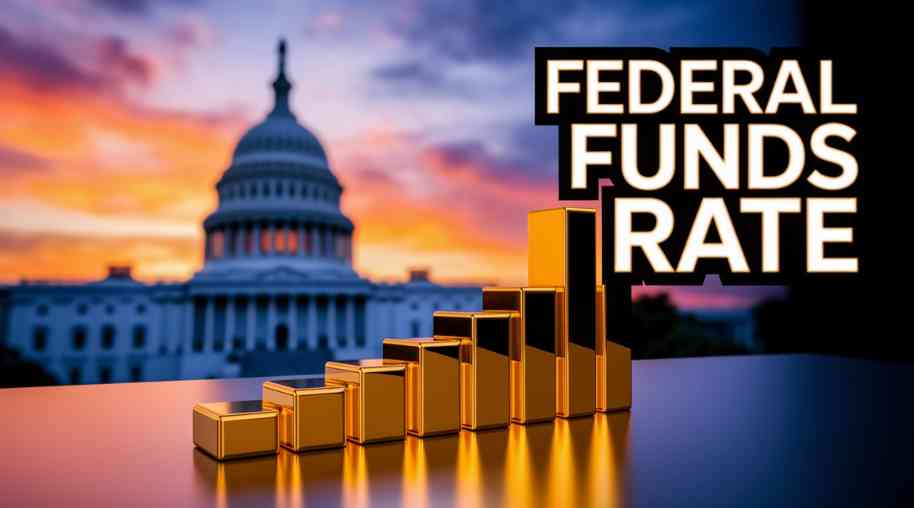FFR Full Form-Federal Funds Rate
by Shashi Gaherwar
0 2000
Introduction
The Federal Funds Rate is one of the most critical tools used by the Federal Reserve (Fed) to regulate the U.S. economy. This interest rate determines the cost at which banks borrow from one another overnight, influencing everything from mortgage rates to inflation. In this article, we will explore what the Federal Funds Rate is, how it works, and its broad impact on financial markets and the economy.

What is the Federal Funds Rate?
The Federal Funds Rate is the interest rate at which banks lend excess reserves to one another overnight. The Federal Reserve uses this rate as a primary tool to control inflation and stabilize the economy. A higher rate makes borrowing more expensive, slowing economic activity, while a lower rate makes credit cheaper, encouraging spending and investment.
How is the Federal Funds Rate Determined?
The Federal Reserve’s Federal Open Market Committee (FOMC) sets a target range for the Federal Funds Rate. The actual rate fluctuates within this range based on supply and demand in the banking system. The Fed influences this rate through open market operations, such as:
- Buying government securities: Increases the money supply, lowering interest rates.
- Selling government securities: Reduces the money supply, raising interest rates.
The Role of the Federal Reserve in Monetary Policy
The Federal Reserve uses the Federal Funds Rate as a key monetary policy tool to achieve economic stability. The primary objectives of Fed policy are:
- Controlling Inflation: If inflation rises too high, the Fed increases the Federal Funds Rate to reduce excess liquidity.
- Encouraging Economic Growth: If economic growth slows down, the Fed lowers the rate to stimulate borrowing and investment.
- Stabilizing Employment: Lower rates encourage businesses to expand, creating jobs, while higher rates prevent an overheated economy.
How the Federal Funds Rate Affects the Economy
The Federal Funds Rate influences various aspects of the economy, including:
- Interest Rates on Loans and Mortgages:
- A higher rate increases borrowing costs, leading to higher mortgage and credit card rates.
- A lower rate reduces loan costs, making it easier for consumers to buy homes and businesses to expand.
- Inflation Control:
- Raising the Federal Funds Rate slows economic activity and reduces inflation.
- Lowering the rate can stimulate spending, increasing inflation if overdone.
- Stock Market Reactions:
- Lower interest rates typically boost stock prices as companies can borrow cheaply.
- Higher rates can lead to stock market declines as borrowing becomes more expensive.
- Value of the U.S. Dollar:
- Higher interest rates attract foreign investors, strengthening the U.S. dollar.
- Lower rates may weaken the dollar, benefiting exports but making imports more expensive.
Historical Trends in the Federal Funds Rate
Over the years, the Federal Funds Rate has fluctuated based on economic conditions:
- 2008 Financial Crisis: The Fed lowered rates to near zero to support economic recovery.
- COVID-19 Pandemic (2020): The rate was again reduced to near-zero levels to counteract economic downturns.
- 2022 Inflation Surge: The Fed aggressively raised rates to combat the highest inflation in decades.
Challenges and Criticisms of Federal Funds Rate Adjustments
- Delayed Economic Impact: Changes in the Federal Funds Rate take time to affect the broader economy.
- Risk of Recession: Aggressive rate hikes can slow the economy too much, leading to job losses and recession.
- Global Influence: Since the U.S. dollar is a global reserve currency, changes in the Federal Funds Rate impact economies worldwide.
The Future of the Federal Funds Rate
- Inflation Management: The Fed may continue adjusting rates to maintain stable inflation.
- Digital Currency and Policy Shifts: The rise of digital assets and decentralized finance (DeFi) may influence future monetary policies.
- Global Economic Conditions: Events like trade wars, geopolitical conflicts, and supply chain disruptions could force unexpected rate adjustments.
The Federal Funds Rate is a powerful economic tool that affects everything from inflation to investment. Understanding how it works helps businesses, investors, and consumers make informed financial decisions. As the global economy evolves, the Fed's interest rate decisions will continue to shape economic growth and stability.
Further Learning Resources
If you’re passionate about building a successful blogging website, check out this helpful guide at Coding Tag – How to Start a Successful Blog. It offers practical steps and expert tips to kickstart your blogging journey!
For dedicated UPSC exam preparation, we highly recommend visiting www.iasmania.com. It offers well-structured resources, current affairs, and subject-wise notes tailored specifically for aspirants. Start your journey today!

Share:








Comments
Waiting for your comments